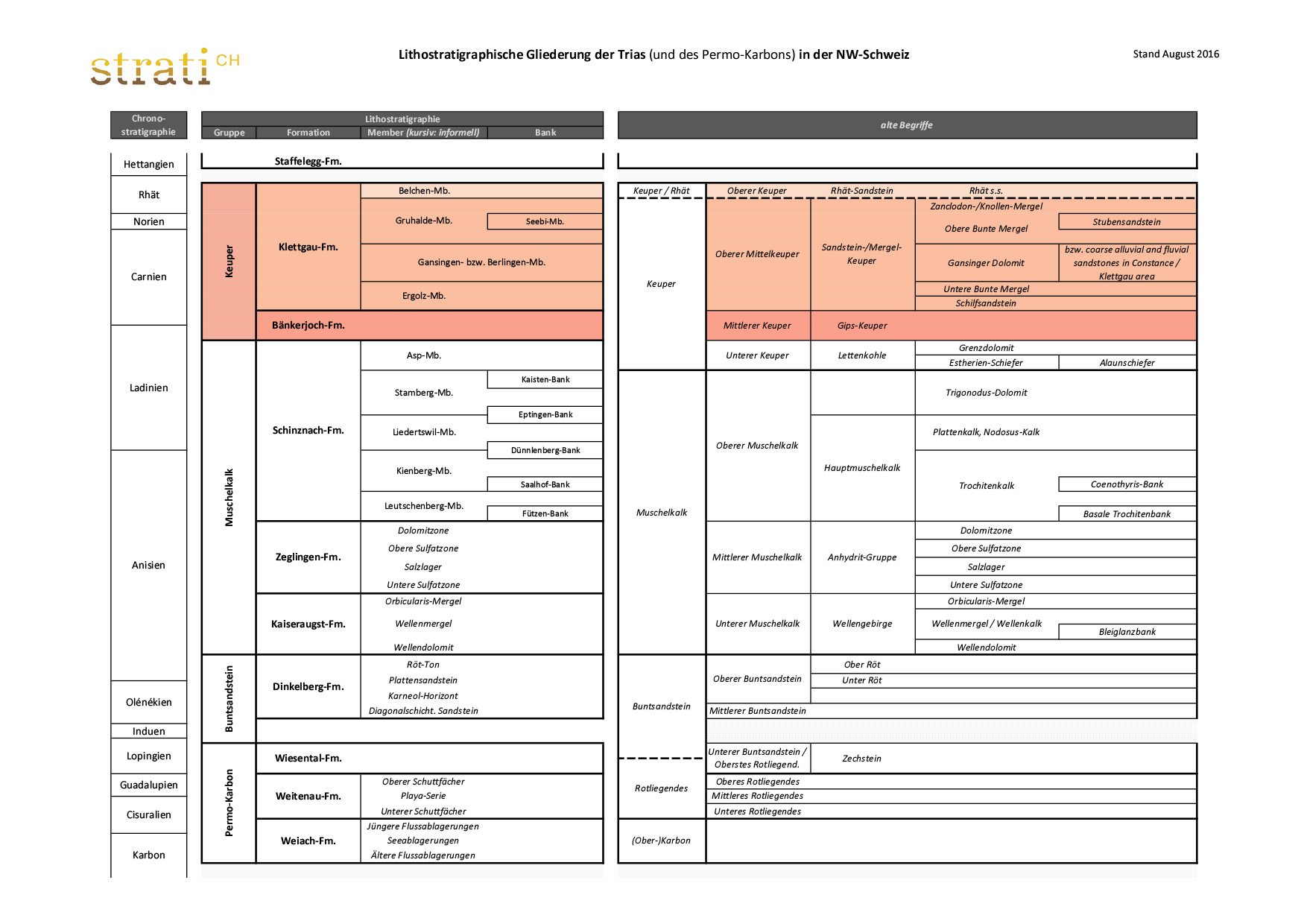Keuper-Gruppe
Representation and status
- Index
- tIII
- Color RGB
- R: 248 G: 195 B: 171
- Rank
- lithostratigraphic Group
- Validity
- Unit is in Use
- Status
- formalised historical term
Nomenclature
- Deutsch
- Keuper-Gruppe
- Français
- Groupe du Keuper
- Italiano
- Gruppo del Keuper
- English
- Keuper Group
- Origin of the Name
-
Der Begriff kommt aus dem Dialekt der deutschen Steinbrucharbeiter für die Bezeichung der Mergel.
- Historical Variants
-
«Obere Trias», Keuper-Gruppe (Mousson 1840), 8e Etage = Keupérien (Greppin 1866), Keuper (Disler 1914, Hinsken 2003, Brentini 2018), bunter Mergel, Lettenkohle (Alberti), Terrain keupérien (Thirria, Thurmann 1832, Gressly), Marnes irisées (Dufrénoy & de Beaumont, Greppin 1867), Keuper = Keuperformation (Fraas 1910)
Description
- Description
-
Bunte Mergel, Evaporite, fluviatile Sandsteine (z.T. mit Kohle), sowie Dolomite.
- Geomorphology
- Zurückwitternd.
- Thickness
- 250 m (Aufranc et al. 2016)
Hierarchy and sequence
- Subordinate units
- Units at roof
Age
- Age at top
-
- Rhaetian
- Age at base
-
- Late Ladinian
Palaenography and tectonic
- Kind of protolith
-
- sedimentary
- Conditions of formation
-
Kontinental (bis flachmarin): vorwiegend fluvio-terrestrische Ablagerungen mit Evaporiten.
- Metamorphism
- non metamorphic
References
-
«Oberer Keuper»
- Rank
- lithostratigraphic unit
- Status
- obsolete term (disused)
- In short
-
Heller feiner Sandstein und dunkle Pflanzenschiefer. Lokal durch ein dünnbankiges Bonebed vertreten.
- Age
- Rhaetian
-
«Mittlerer Keuper»
- Rank
- lithostratigraphic unit
- Status
- obsolete term (disused)
- Valid term
- Baenkerjoch-Formation
- In short
-
Blaugraue oder bunt gefärbte gipshaltige Mergeln, mit Steinmergelbänke, Gipslagen und Sandsteine.
-
«Unterer Keuper»
- Rank
- lithostratigraphic unit
- Status
- obsolete term (disused)
- Valid term
- Asp-Member
- Nomenclatorial Remarks
- <p>Der «Untere Keuper» wird in der Schweiz neu als Asp-Member der Schinznach-Fm. definiert und somit der Muschelkalk-Gruppe zugeordnet.</p>
- In short
-
Graue dolomitische, Gyps-führende Mergel mit Kohl- und Sandstein-Bänder.

